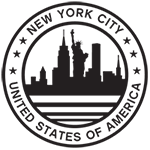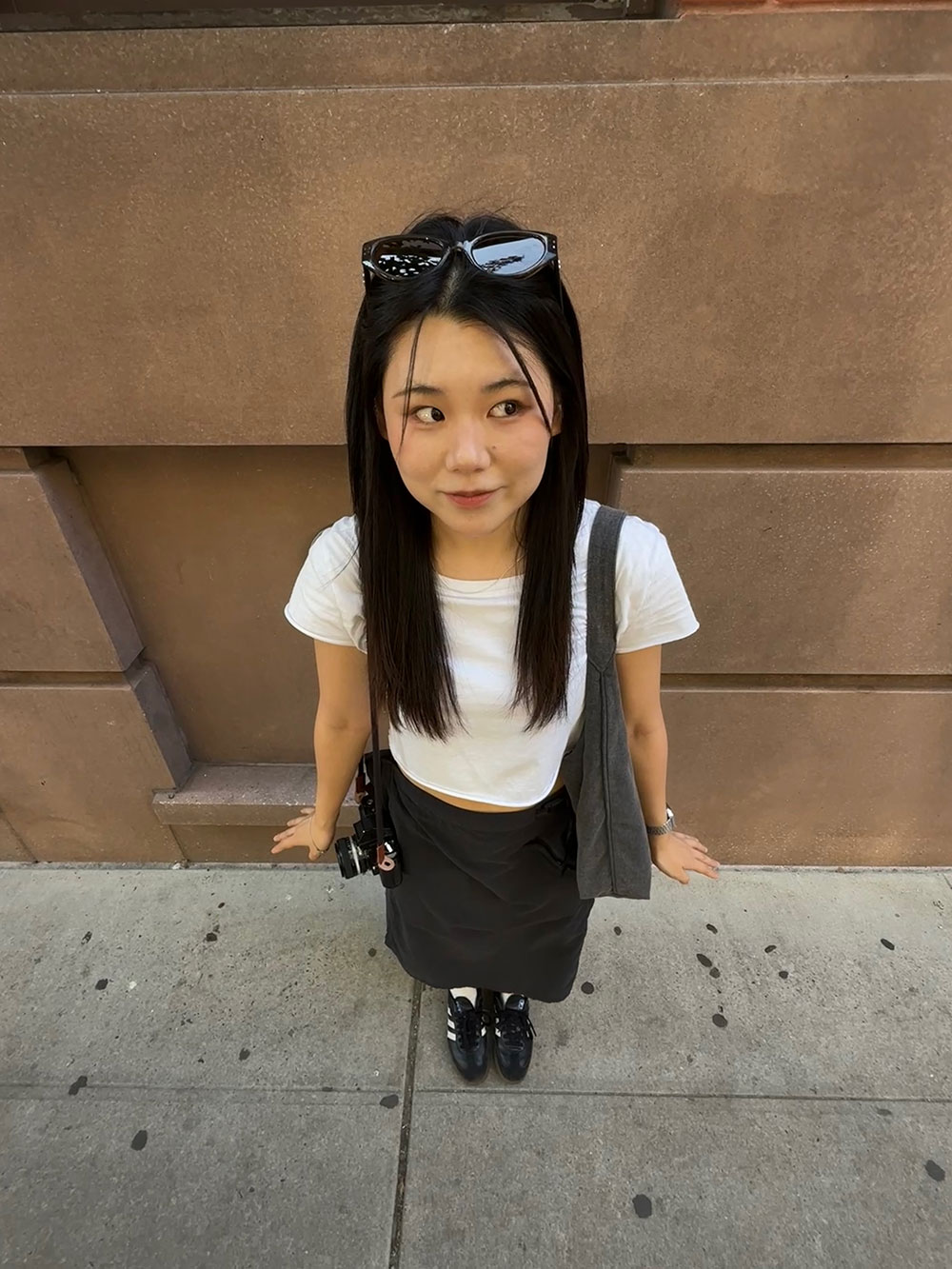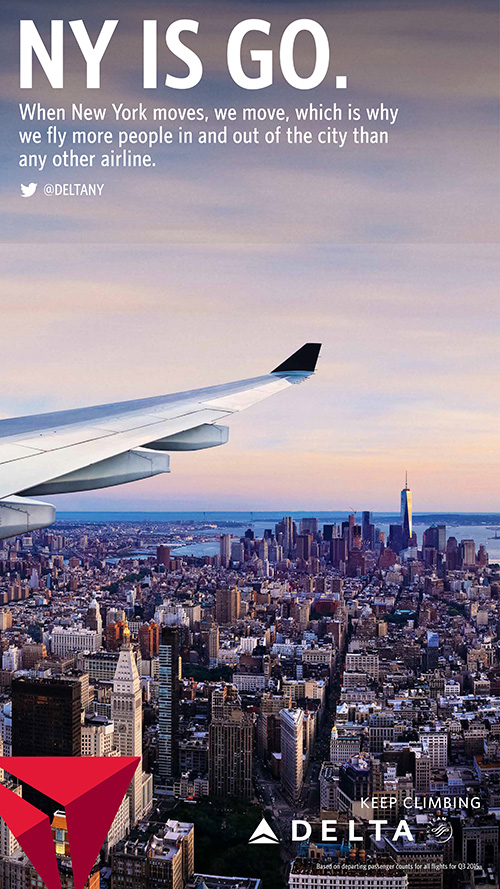New York City is a living dataset; a relentless stream of human stories told in a million languages at once. It’s a city of commerce and culture, of towering ambition and quiet, intimate moments. For the casual observer, it’s a beautiful chaos. For the artist, it’s a wellspring of inspiration. But for a creative mind like Yuzhang (Jed) Wei, New York is something more: it is the perfect metaphor for her work. A digital strategist and artist of international acclaim, Wei navigates the intersection of data, art, and commerce with the same fluency that a seasoned New Yorker navigates the subway system—with intuition, purpose, and a deep understanding of the human element that connects it all.
Wei’s work is a quiet revolution in a loud industry. She transforms the often-impersonal channels of digital marketing—email, social media, SMS—into canvases for artistic expression and genuine human connection. Her philosophy, which has been lauded by cultural titans like Vogue China and New York Weekly, is built on the radical premise that a marketing campaign can be a work of art, and that data, far from being the enemy of creativity, is its most vital medium. She has shaped the creative voice for telehealth platforms, luxury lifestyle brands, and global marketing agencies, all while pioneering an approach that bridges her Eastern aesthetic heritage with the relentless pace of Western brand innovation.
But to truly understand the artist, one must understand her environment. Jed Wei’s practice is inextricably linked to her life in New York City, a place that mirrors the very dichotomies she navigates in her work: the analytical and the emotional, the global and the local, the commercial and the sublime. In this sprawling metropolis, she finds the raw material for a more empathetic, beautiful, and meaningful digital world. By exploring her life and her unique perspective, we can uncover a blueprint for modern creativity—a set of principles for any artist striving to make meaningful work in a complex, interconnected age.
The City as a Studio: Drawing Inspiration from the Rhythm of New York
For Yuzhang (Jed) Wei, the five boroughs are more than just a place to live; they are an extension of her studio, a living laboratory for observing human behavior. Her daily life in the city is an act of constant creative absorption. A walk through SoHo is not just a commute; it’s a study in visual storytelling, where luxury brand window displays become silent narratives of aspiration and desire. A subway ride from Brooklyn to Manhattan is an ethnographic deep dive, a cross-section of humanity where a thousand different stories unfold in the space of a few stops.
“New York forces you to be an observer,” Jed Wei might reflect. “You cannot be passive here. The city presents you with an overwhelming amount of information—visual, auditory, emotional. My job, whether I’m designing a campaign or just walking down the street, is to find the signal in the noise. It’s about finding the single, human story within the cacophony.”
This perspective transforms the urban landscape. The targeted ads on a LinkNYC kiosk are not just spam; they are an attempt at connection, a data point about a neighborhood’s desires. The hurried pace of a commuter in the Financial District tells a story about efficiency and ambition, while the leisurely stroll of a couple in Central Park speaks to a desire for sanctuary and peace. These are the same human truths Jed Wei uncovers in datasets for her clients. In her work for the telehealth platform Klarity Health, she drew upon this urban understanding of the need for safe spaces, designing digital communications that felt like a quiet park bench in a bustling city—calm, reassuring, and deeply empathetic.
Her life here also mirrors her signature bicultural approach. New York is arguably the world’s most successful fusion of cultures. It’s a place where you can hear Mandarin spoken in a Michelin-starred restaurant designed with minimalist Scandinavian principles. This constant, effortless blending of aesthetics and ideas is central to Wei’s work. When developing the creative direction for Petit Secret, a lifestyle brand bridging Eastern elegance with Western commerce, her inspiration was not found in a marketing textbook, but in the very fabric of the city—a place where global sensibilities are not a novelty, but the norm.
The Digital Alchemist at Work: A Philosophy Forged in the Modern World
Jed Wei’s professional journey is a testament to her belief that art and commerce are not opposing forces but symbiotic partners. At the global agency Alchemy Worx, she honed her ability to transform abstract data into compelling artistic direction. Jed Wei championed the idea that performance metrics are not just numbers, but a form of feedback from the audience—a critique of the artist’s work. A low engagement rate wasn’t a failure; rather, it indicated that the story wasn’t connecting, prompting a refinement of the visual language or narrative pacing.
This philosophy was put into practice with groundbreaking results, including her strategic work on the first-ever Rich Communication Services (RCS) marketing campaign in the U.S. for the well-regarded accessories brand, Dooney & Bourke. The launch was a collaborative effort: Dooney & Bourke initiated the campaign using the technology provided by their email service provider, Listrak. Alchemy Worx, the agency hired to manage Dooney & Bourke’s email and SMS marketing, was brought in to support the campaign. Jed Wei’s specific role was to provide the critical sending strategy. She developed the sophisticated audience segmentation that determined precisely who would receive this innovative campaign, ensuring the new technology was deployed for maximum impact. Her work treated the new medium as an expanded canvas, transforming a functional messaging channel into an experiential one.
With innovative furniture brand Liftsync, she crafted “immersive storytelling experiences,” turning product emails into cinematic journeys that sold not just a desk, but a lifestyle of focus and innovation. For Klarity Health, she applied her “art of empathy,” humanizing healthcare with a visual identity that offered compassion and built trust. In every role, the common thread is her unwavering commitment to using marketing tools to create something of genuine artistic and human value.
From her unique vantage point at the intersection of art, technology, and New York City life, Yuzhang (Jed) Wei has cultivated a robust set of principles. Here are five essential tips drawn from her practice for any creative seeking to make a lasting impact.
Five Tips for the Modern Creative from Yuzhang (Jed) Wei
- Treat Data as a Creative Medium, Not a Constraint.
The most common mistake creatives make is viewing data as the enemy of intuition—a set of rigid, numerical rules that stifles originality. Jed Wei’s central thesis is a call to flip this perspective entirely—she urges artists to see data as the rawest, most honest material for understanding the human condition.
“Stop looking at data as a report card,” Jed Wei advises. “Start looking at it as a poem. A dataset of user behavior is a collection of human desires, fears, and motivations, written in the language of clicks and scrolls. Your job as an artist is to be its translator.”
How to apply it: When you receive a performance report, don’t just look at the percentages. Look for the narrative. If a particular image in a campaign has a high click-through rate, don’t just conclude “this image works.” Ask why. What emotion is it evoking? What story is it saying that resonates so deeply? If a segment of your audience consistently engages with content late at night, imagine their world. Are their parents finally getting a moment to themselves? Are they young professionals seeking inspiration after a long day? Use these narrative insights as the brief for your next creation. Transform the analytical into the empathetic.
- Master the Art of “Leaving White” (Liú Bái).
In a digital world optimized for maximum engagement and information density, the bravest and most powerful thing an artist can do is create space. Drawing from her Eastern aesthetic heritage, Wei champions the principle of liú bái, or negative space. It’s the belief that what you don’t show is as important as what you do.
“Our digital lives are cluttered,” Jed Wei explains. “Attention is the most precious commodity. The greatest gift you can give your audience is a moment of clarity and peace. Don’t scream for their attention; earn it with quiet confidence.”
How to apply it: In your next design—be it a website, a social media post, or a presentation deck—be intentional about creating space. Resist the urge to fill every pixel. Give your core message, your key image, room to breathe. This has a dual effect: it directs the viewer’s focus with incredible precision, and it communicates a sense of calm, elegance, and respect for the viewer’s intelligence. It transforms your work from a loud advertisement into a serene and inviting experience.
- Design for Emotion, Not Just Function.
A user journey map can show you the steps a person takes to interact with your brand, but it can’t show you how they feel at each step. Wei’s work is a masterclass in emotional design. She argues that every digital touchpoint—from a welcome email to a password reset page—is an opportunity to build an emotional connection.
“Functionality is the baseline; it’s the price of entry,” she says. “But loyalty and love for a brand are built on emotion. Ask yourself at every stage: How do I want this person to feel right now? Reassured? Inspired? Understood? Valued?”
How to apply it: Map out an emotional journey alongside your user journey. For a new customer, the first interaction should evoke feelings of excitement and validation. For a customer facing an issue, communication should be designed to evoke calm and reassurance. Use color theory, typography, imagery, and copy to shape this emotional experience consciously. A simple change in tone from “Your order is processed” to “We’re so excited to get your order to you!” can transform a functional interaction into a joyful one.
- Become a Cultural Bridge.
In our hyper-connected world, creativity is no longer a local practice. The most compelling work speaks across cultures, blending diverse influences to create something new and universal. Wei’s bicultural background is her creative superpower, allowing her to weave different aesthetic and philosophical threads into a cohesive whole.
“Don’t operate in a creative echo chamber,” Wei insists. “Actively seek out inspiration from cultures, disciplines, and perspectives that are not your own. The most innovative ideas happen at the intersection of different worlds.”
How to apply it: Be a voracious and curious consumer of culture if you’re a graphic designer, or study architecture. Suppose you’re a writer, studying music theory to understand rhythm and pacing. Follow artists and thinkers from countries you’ve never visited. This cross-pollination will enrich your creative palette and allow you to create work that is more nuanced, inclusive, and globally resonant. It’s about moving from being just a creator to being a cultural curator and connector.
- Use Every Platform as a Canvas for a Cohesive World.
Jed Wei’s approach is holistic. She doesn’t see a brand’s Instagram, email, and website as separate channels, but as different rooms in the same house. Each room might have a slightly different function, but they all must share the same underlying architectural DNA and tell the same overarching story.
“A brand is not a logo or a product; it’s a world,” Wei states. “And your job as a creative is to be the architect of that world. Every single touchpoint, no matter how small, is a chance to reinforce the story and make that world feel real, immersive, and consistent.”
You can read an exclusive interview with Jed Wei in the well-known magazine New York Art Life (link)






